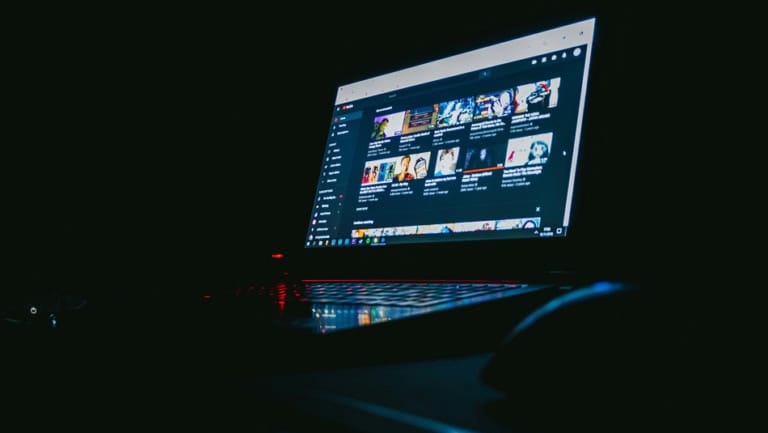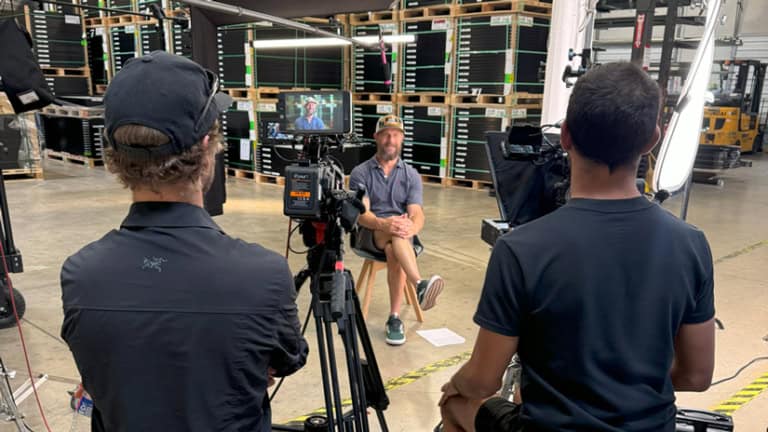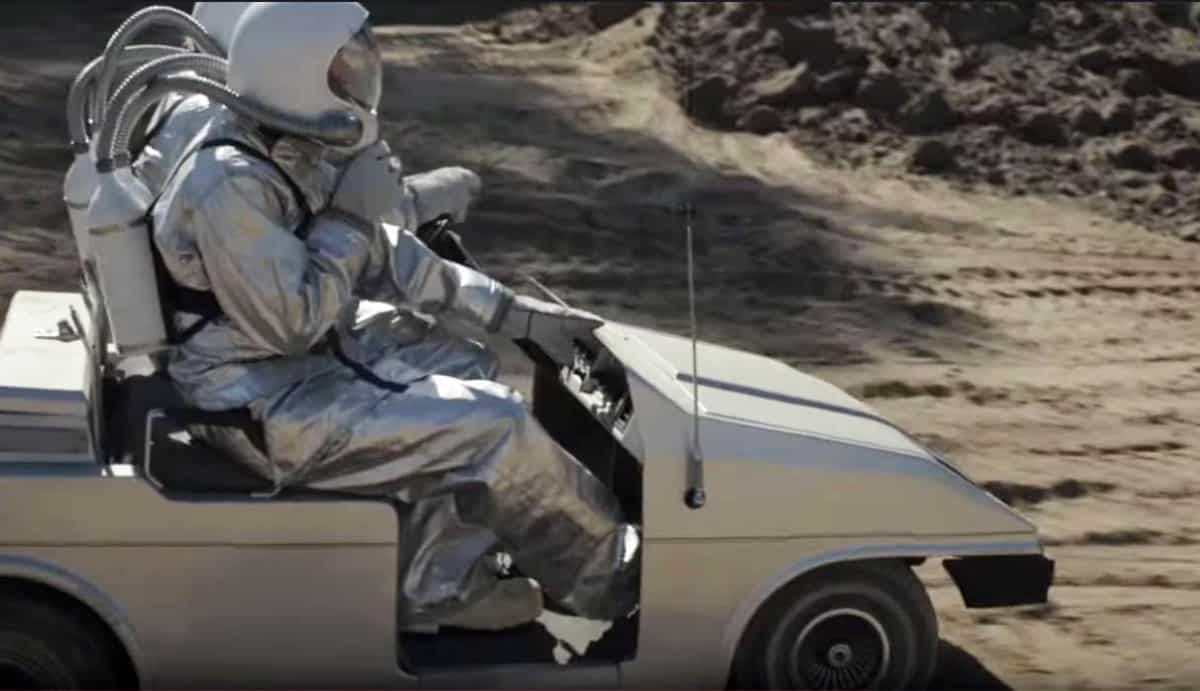
If you’re like us, then you temporarily escaped the chaos of March by watching esoteric music videos on YouTube.
During one of those episodes, we stumbled upon the music video for “Sherman,” a soothing song by our favorite San Diego indie rock band Pinback. The video was directed by Matt Hoyt, a long-time filmmaker who now runs his own production company, Wormwood Films.
It turns out that Hoyt needed the momentary break from reality as much as we did. A co-owner of a bar/restaurant in San Diego called Starlite, he had to pause operations in March due to the Coronavirus.
We appreciate Hoyt being so gracious with his time during a difficult period. Below are excerpts from our conversation.
3&L: How did you get introduced to Pinback?
Hoyt: When I was in high school, I was booking an all-ages club in an abandoned 99-cent store in East County, San Diego. Through booking bands, I became friends with the San Diego music community.
Rob Crow from Pinback was in a band called Heavy Vegetable for a while. They were an excellent band. And Zach from Pinback was in a band called Three Mile Pilot.
Out of high school – this is now the mid-to-late-90s – I was really getting into film. I started playing around with different formats. Then I went to the Bay Area and I finished my degree at San Francisco State, but it was in writing. And then I came back to San Diego to get my masters in film at San Diego State, and when everybody got word that I was actually pursuing film seriously, I would get people calling me up saying, “Will you help us with a music video?”
3&L: How did the music video for “Sherman” materialize?
Hoyt: It came about because Rob Crow is, first of all, an awesome omnivore of anything, film, television, and music. He knows a lot about a lot, and he turned me on to this whole genre of Cold War-era Russian sci-fi. I had known a little bit about it, but he was like, “Have you seen this stuff?” And I was like, “Yeah, I’m familiar with a little bit of it.” He goes, “No, you’ve got to watch this movie and this movie and this movie.”
And these Russian filmmakers were making these elaborate sci-fi films, but they were making them like stuff that we did when we were little kids in the backyard – making like alien landscapes by putting an aquarium in front of a camera lens and simulating that guys are underwater.
So I was just super inspired by all that stuff. And then Rob’s enthusiasm got me all excited. So “Sherman” is really an homage to similar-looking types of films.
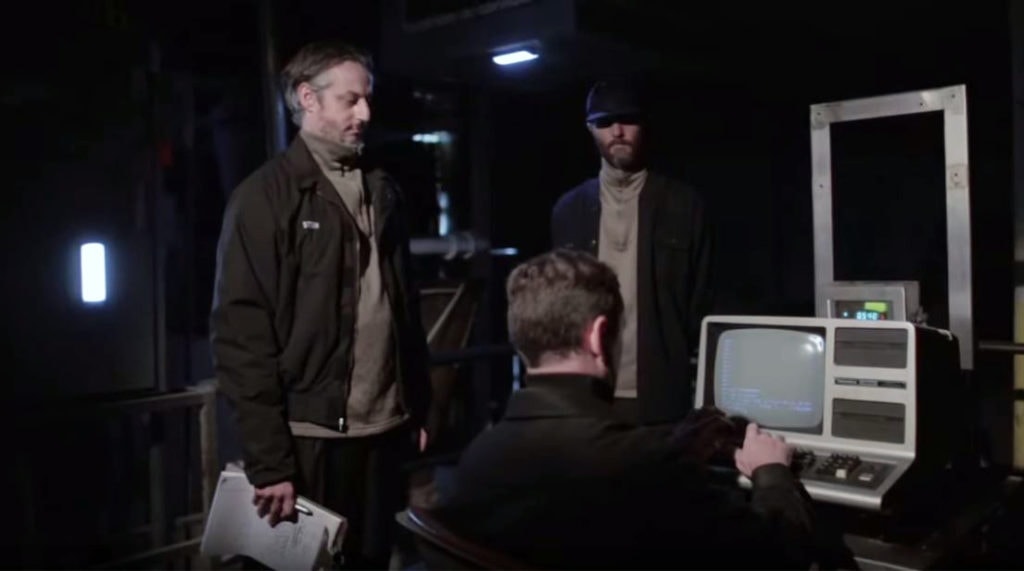
Hoyt acquired the computer at a flea market. “If you know that font and that blinking cursor, then you know that there’s a TRS-80 in the video. I didn’t even pay for it. And then we plugged it in and it worked.”
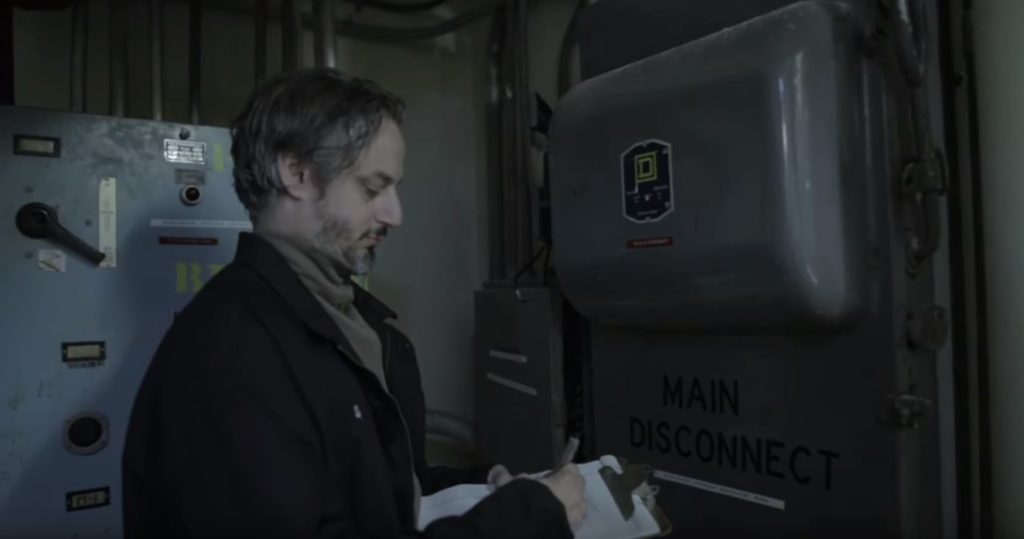
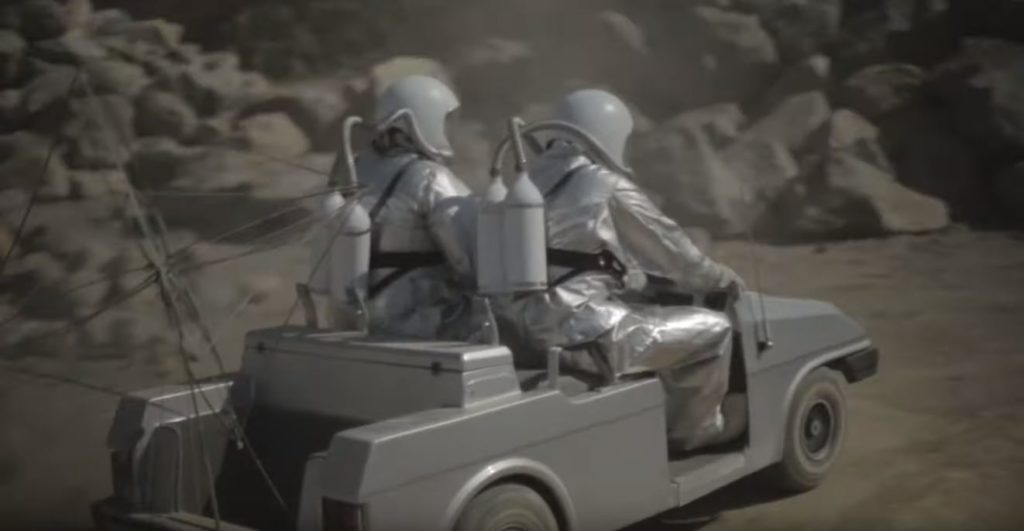
3&L: Where did you film the indoor scenes?
Hoyt: A friend of ours who is an architect, his investment group had bought an abandoned bread factory that they were going to turn into an art gallery. So the control room in “Sherman” is that friend’s place.
He was kind of scared when I said I wanted to shoot there because there were exposed electrical wires and all of this old weird metal bread manufacturing equipment. And I said, “That’s what I want, man.”
3&L: What was the intended narrative for the music video?
Hoyt: It’s the idea of being lost in space and the crew mourns the loss of each other, but you don’t realize what they’re searching for until the end of the video. And then you realize they actually die.
We didn’t really figure that out until we were shooting. I kept trying to figure out if there’s a narrative arc to these somber space people wandering around these cool places. Part of me was tempted to think, “Well, hopefully, that’s enough.” But when you’re making a project with a band, you’re like, “It’s got to have more.” Then we were out there in the middle of that rock quarry that looks like a foreign planet, and we realized that we should just have it so that they lose their lives.
3&L: How hands-on was the band in the making of the video?
Hoyt: I actually edited that video with Rob Crow. He was literally sitting next to me at my house for like a week just trying to figure the thing out. I loved him being around because he edits very musically and he was very adamant about cutting on certain beats and certain moments. It’s edited in a way – and it has a structure – that is very similar to what Pinback performs like live, meaning they have a lot of visuals when they perform live.
3&L: What were your biggest challenges?
Hoyt: The budget wasn’t that great. It was $5,000. No more than that. I probably used more than half the budget just to get the insurance policy that would let us shoot on the rock quarry, which was in El Cajon or Santee.
Our production designer, Jason Sherry, had found these airport-grade fire department suits that he modified into spacesuits. It was 103 degrees out there at the rock quarry. And Rob and Zach literally almost had heat stroke several times. They pushed themselves to the limit.
When you’re getting ready to release a record that you’re excited about, everybody’s enthusiasm is high. But whenever my friends in bands come back from tours, they’re like, “I need to take a break from music for a little while.” But pre-record release, there’s always this sense of wonderment and people are just like, “We’ll do whatever it takes to make this rad.”
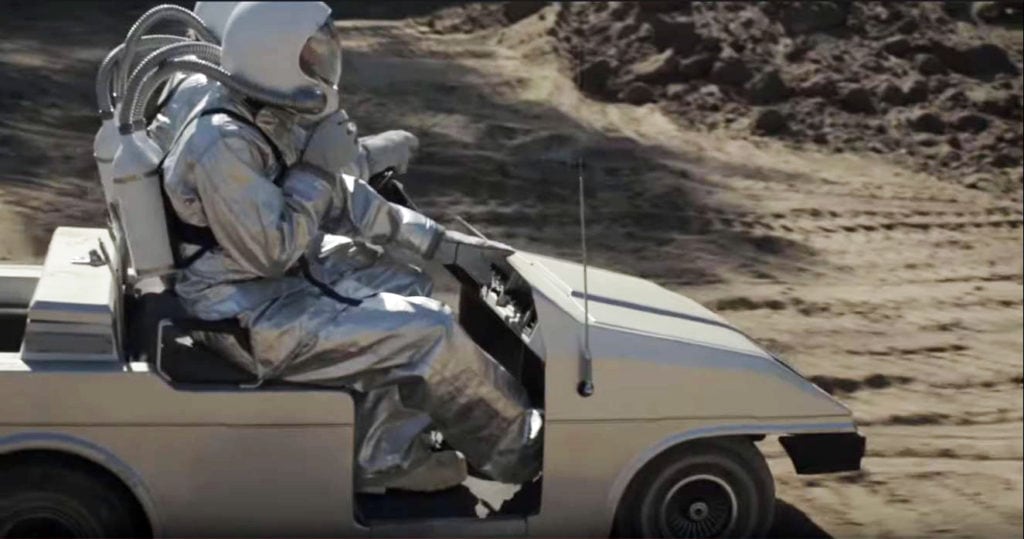
3&L: Was the space buggy just a modified golf cart?
Hoyt: That golf cart is an actual DeLorean golf cart. It’s literally modeled after the DeLorean car. I regret not buying that golf cart, because it was for sale for $1,500. What we did was we modified it and took the roof off a bit and made it like a little electric car and then put on some antennas and stuff.
There was a used golf cart place, and these guys were like, “We don’t really rent golf carts. We fix them and we sell them.” I explained to the guys what we were doing and the band, and one of the kids that worked there had heard of Pinback, and he’s like, “Oh yeah, they’re cool.” So I think it was like $200 to rent.
3&L: Is there anything about the video that you regret?
Hoyt: That was at a time where – before we could go to Vimeo and YouTube – that video premiered exclusively on Wired.com. They bought it for a week. And they still have it on their site. Wired hosted the video locally inside their ecosystem, so we had no idea who was watching it, how many clicks it got.
If they would have just embedded the YouTube link, we probably would have found a much wider audience. And I tried to mention that to the PR powers that be. I think that my recommendations sort of just got lost in the shuffle because everyone was just so excited that Wired.com wanted to premiere it. And I really do think that could have been the difference between like hundreds of thousands of views versus millions.

